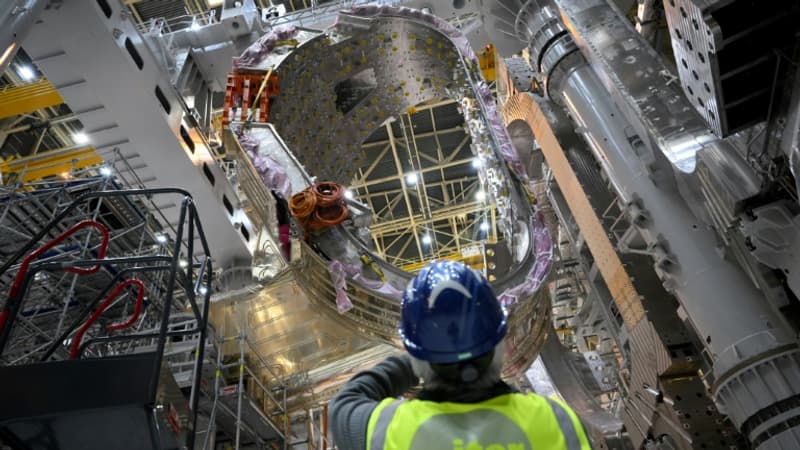The construction of the Iter Nuclear Fusion Experimental Reactor has crossed an “important step” with the completion of the last module of what the “most powerful world in the world must constitute,” international collaboration announced Wednesday. Promise of clean, safe, economical and almost useless energy, Iter aims to master energy production from the fusion of derived hydrogen atoms, such as what happens in the heart of the stars.
The general director of Iter Pietro Barabaschi praised in a press release the “framework of international cooperation” that supported the project “despite the evolution of political contexts.” The program is the result of collaboration between the European Union, the United States, China, Russia, South Korea, Japan and India.
The first crucial scientific step will not cross before at least 2033
Nuclear fusion creation requires temperatures of approximately 150 million degrees Celsius and gigantic magnetic fields to create and limit plasma, a hot gas electrically loaded. The magnetic system in the reactor’s heart is composed of several sets of electromagnetic coils. The last element of this very complex system, one of the six modules that make up the “central solenoid”, has just been completed in the United States.
Once completely gathered in Saint-Paul-Ale-Durance (Bouche-Du-Rhône), the central solenoid, with a weight of 1,000 tons and a height of 18 meters, will be the most powerful superconductor “in the world”, according to Iter. It can produce a magnetic field of 13 teslas, 280,000 times more powerful than the Earth’s magnetic field. Which would do it capable of “lifting a carrier” out of water.
The construction of Tokamak, the reactor, will still generate several years of work. Since its official launch in 2006, Iter has suffered significant delays and an additional cost of around 5 billion euros has announced the collaboration last summer. The first crucial scientific step, the production of the first plasma, initially planned this year, was postponed to at least 2033. The arrival at the complete stage of magnetic energy, that is, the stable obtaining of the total power necessary for the future operation of the reactor, is expected in 2036.
Source: BFM TV


